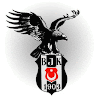The founders of the University of Buffalo in 1846 intended to create a comprehensive university including, as Chancellor Millard Fillmore stated in his first commencement address, "academic, theological, legal and medical departments." The original seal spoke for the hopes of the founders as shown by the hand holding the torch that was to represent the university lighting the way to knowledge and wisdom. The center of the seal included a bust of Hippocrates surrounded by representations of the four disciplines which the founders hoped the University would develop: an aesculapian staff (medicine), a cross (theology), scales (law), and a scroll and quill (liberal arts). Despite the intentions of the founders, the sole component of the University until 1886 was the School of Medicine. The Law School did not become a part of the University until 1892, and liberal arts were only added in 1913. The University of Buffalo, always a non-sectarian institution, never had a department of theology.
1923-1962
Prior to the year 1922, the official seal of the University was representative only of the medical, dental and law schools. The University Council in that year commissioned the well-known Lucius Bartlett to design a new seal that would be representative of the greater University of Buffalo, then being welded into a centralized and closely-knit organization.
Mr. Bartlett, after considerable technical research produced a design, which although quite simple and inornate, seemed to embody all of the necessary requirements. It was then submitted to Mr. Hollis Godfrey of Boston, noted authority on heraldry, who approved the design relative to its correct significance.
The seal was cut by Tiffany and Company of New York City and was officially adopted by the University, September 18, 1923.
Technically, the seal is a circular plaque, with the Latin inscription Sigillum Universitatis Buffalonensis surrounding an inner plaque. A translation of the inscription is "The Seal of the University of Buffalo." On the smaller plaque is a rampant bison, significant of the City of Buffalo, mounted on an escutcheon or shield, the escutcheon being supported by the palm leaves of victory.
On the escutcheon are three inescucheons. Located at the dexter chief and sinister points, or upper left and right corner of the escutcheon, are two inescutcheons bearing the initials "U" and "B", representing tbe University of Buffalo. At the middle base or botton is the third inescutcheon with the Latin inscription spe - translated --"With Hope." A chevron is located between these three inescutcheons, charged with the flames of wisdom.
1962-1966
In 1962, the University of Buffalo merged with the State University of New York to become the State University of New York at Buffalo. From 1962 to 1966, the State University of New York's seal was used at UB. The seal shown here was the design in use at the time. Since then the SUNY seal and motto have been changed.
1967-1982
A new seal for State University of New York at Buffalo was designed in 1967 by Ivan Chermayeff and the New York firm of Chermayeff and Geismar Associates, and first used at the inauguration of President Martin M. Meyerson on May 29, 1966.
The seal represents a radial cluster of books which symbolizes the integration of knowledge achieved through the diverse faculties of the university incorporated into a silver medallion of office.
1982-1988
In 1982, the University at Buffalo returned to the design originally adopted in 1922, though the Latin name of the University in the older seal was replaced by the current name of the State University of New York at Buffalo.
1988-2001
In 1988, the Buffalo was redesigned. The new seal had the redesigned buffalo with the words "The State University of New York at Buffalo, 1846" in the outer ring.
UB Logo: 1998-present
In 1996, at the conclusion of the University’s sesquicentennial celebration, for which a special logo was created, President William R. Greiner asked the staff in the Office of Publications to design a new “look” for UB. The new University signature—the interlocking UB and supporting typography resulted from a yearlong process of design and review by university constituencies, including students, faculty, staff, and alumni, and was formally unveiled in January 1998.
2001-present
The seal was again revised in 2001 to feature the University's current name, "University at Buffalo" and "The State University of New York," in the outer ring. The year "1846," once on the outer ring, was moved to the third inescutcheon that formally had the Latin inscription, spe -- "With Hope."
References:http://ublib.buffalo.edu/archives/seal.html
http://www.buffalo.edu/toolbox/vi_introduction.html





















0 yorum:
Post a Comment